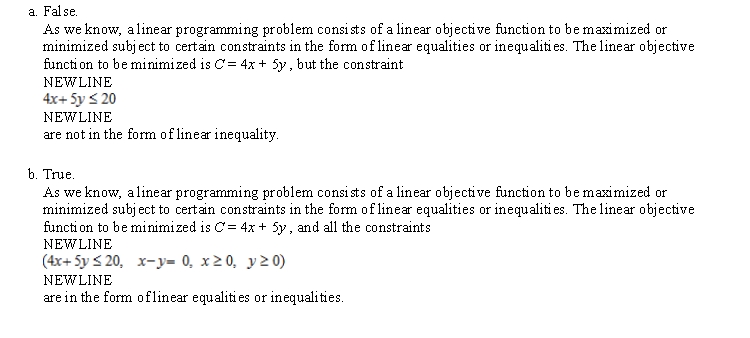Determine whether the statement is true or false. If it is true, explain why it is true. If it is false, give an example to show why it is false. The following problem is a linear programming problem.
Minimize 
 subject to:
subject to:  x - y = 0
x - y = 0 

A) False.
As we know, a linear programming problem consists of a linear objective function to be maximized or minimized subject to certain constraints in the form of linear equalities or inequalities. The linear objective function to be minimized is C = 4x + 5y , but the constraint  are not in the form of linear inequality.
are not in the form of linear inequality.
B) True.
As we know, a linear programming problem consists of a linear objective function to be maximized or minimized subject to certain constraints in the form of linear equalities or inequalities. The linear objective function to be minimized is C = 4x + 5y , and all the constraints  are in the form of linear equalities or inequalities.
are in the form of linear equalities or inequalities.
Correct Answer:
Verified
Q105: Formulate but do not solve the following
Q106: Formulate but do not solve the following
Q107: Formulate but do not solve the following
Q108: Formulate but do not solve the following
Q109: Formulate but do not solve the following
Q111: Formulate but do not solve the following
Q112: Ashley has earmarked at most $270,000 for
Q113: Custom Office Furniture Company is introducing a
Q114: Formulate but do not solve the following
Q115: Formulate but do not solve the following
Unlock this Answer For Free Now!
View this answer and more for free by performing one of the following actions

Scan the QR code to install the App and get 2 free unlocks

Unlock quizzes for free by uploading documents